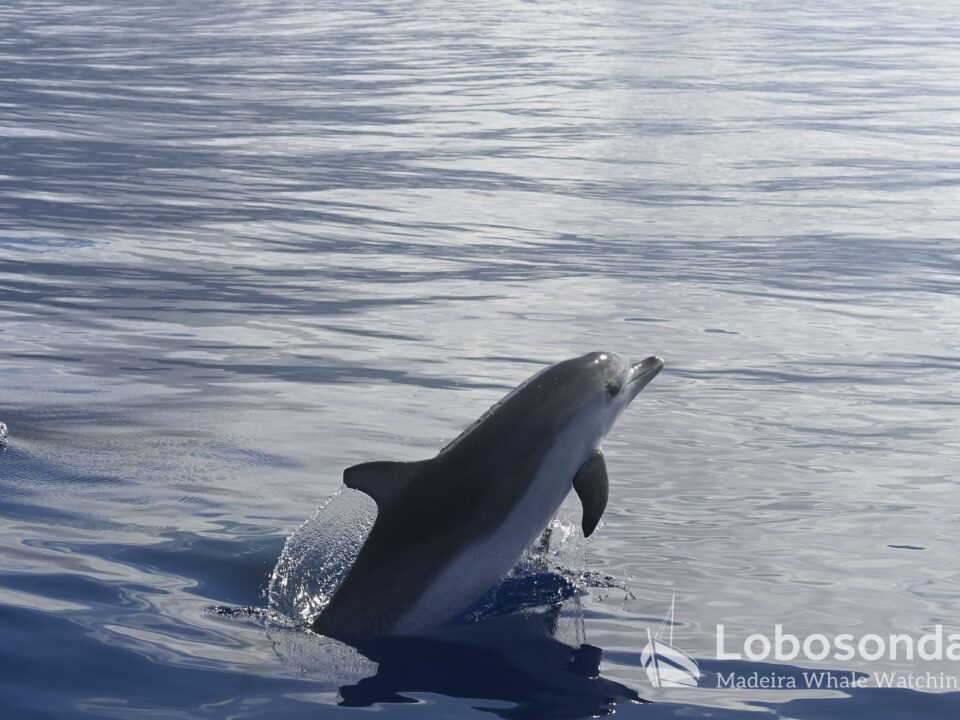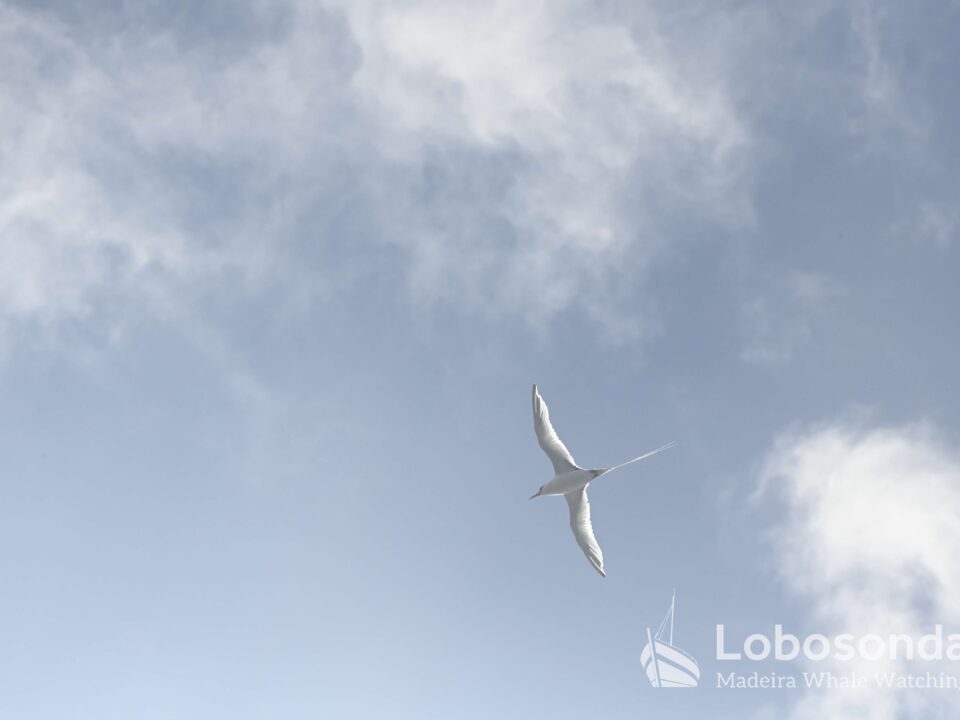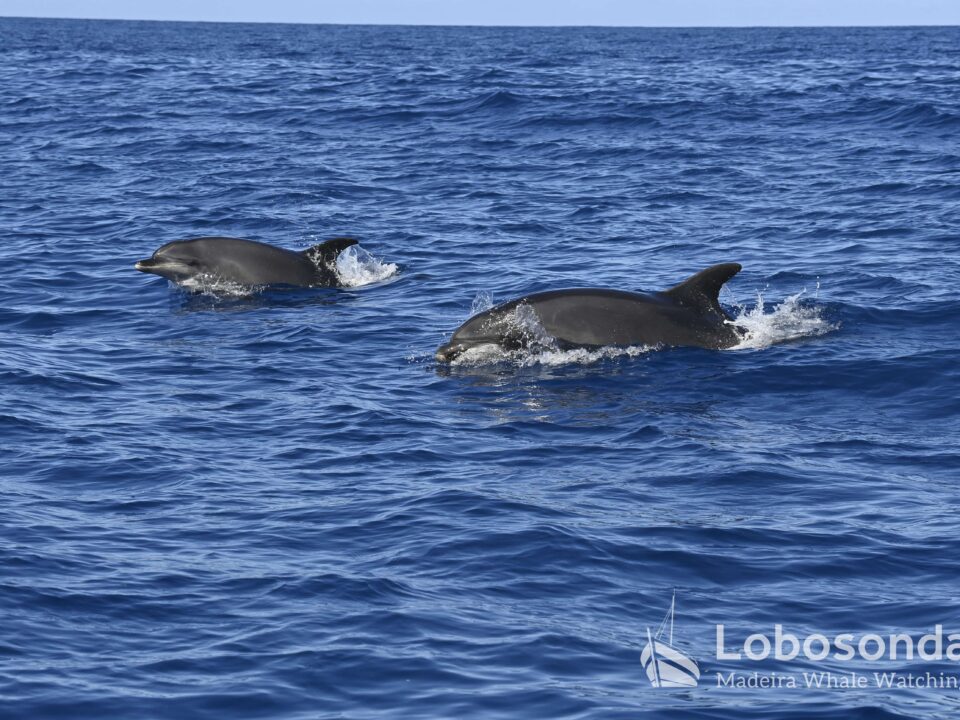
03.07.2017 – The feeling is mutual
July 11, 2018
05.07.2018 – One Day in a Baby Dolphins life
July 13, 2018It was twenty past three, the sun was shining, the ocean was clam. There were just some little waves and a light breeze. It was a good day, a good day for whale watching! That’s also what the Atlantic spotted dolphins (Stenella frontalis) thought. “What a good day, a good day for some action!”
We have been almost four miles offshore, cruising in moderate speed when they approached us from the side. They were speeding up, going to the bow, taking a round and coming from the side again. The boat accelerated and so did the dolphins. We got slightly pushed into our seats and at the same time astonished by the oceanic acrobats surrounding us. They started to sprint and jump all around us. In some moments up to five animals have been in the air at once. The dolphins were in real action mode and they showed off. Overtaking maneuvers on both sides. They were going fast and seemed to enjoy the motion of our zodiac.
But how fast can they get? What is the fastest animal in the ocean at all? To answer this, we might start very slow. Plankton, the elementary fundament of all marine wildlife moves rather slow. This form of life is defined by the way it moves: go with the flow. Phyto- or zooplanktonic organisms travel from a to b with the ocean currents.
Sea turtles feed on planktonic jellyfish and also take advantage of the currents during their transatlantic migrations. Over short distances, they are able to move surprisingly fast. Nevertheless, they don’t belong to the high-speed elite in the ocean.
The dolphins are members of that league. We saw Bottlenose dolphins (Tursiops truncatus) this morning. Those relatively large members of the dolphin family reach up to 30 km/h. With up to 50 kilometers an hour, our action-loving spotted dolphins are even faster. They have no problem to follow to speed of the boat and seem to enjoy the race by dashing out of our stern wave. Short-beaked common dolphins (Delphinus delphis) are also known to be very agile and Pilot whales (Globicephala macrorhynchus) can go by more than 60 km/h.
But are there animals in the ocean who can go even faster? Yes! Tuna species (Thunnus spec.) leap with a pace of up to 70 km/h and Mako sharks (Isurus oxyrinchus) can reach velocities of almost 80 km/h. The first place in this competition is shared by Marlins (Istiophoridae), Sail- (Istiophorus spec.) and Swordfish (Xiphias spec.). Those high-speed offshore hunters are able to chase their prey with an incredible speed of 100 km/h.
But there is one animal which beats all the others: The Northern Gannet (Morus bassanus). Normal travelling speeds are not as impressive but, in a nosedive, down to the surface and into the water, those fascinating seabirds can go faster than 100 km/h – an extraordinary oceanic predator. We were very happy about the sighting of a juvenile of those great sea birds during our tour with the Ribeira Brava today.
by Jan-Christopher Fischer
Sightings of the day
Ribeira Brava
13:30 Short-beaked common dolphins, Striped dolphins, Northern Gannet
Stenella
09:00 Bottlenose dolphins, Atlantic spotted dolphins
15:30 Striped dolphins, Atlantic spotted dolphins, Loggerhead turtle
















